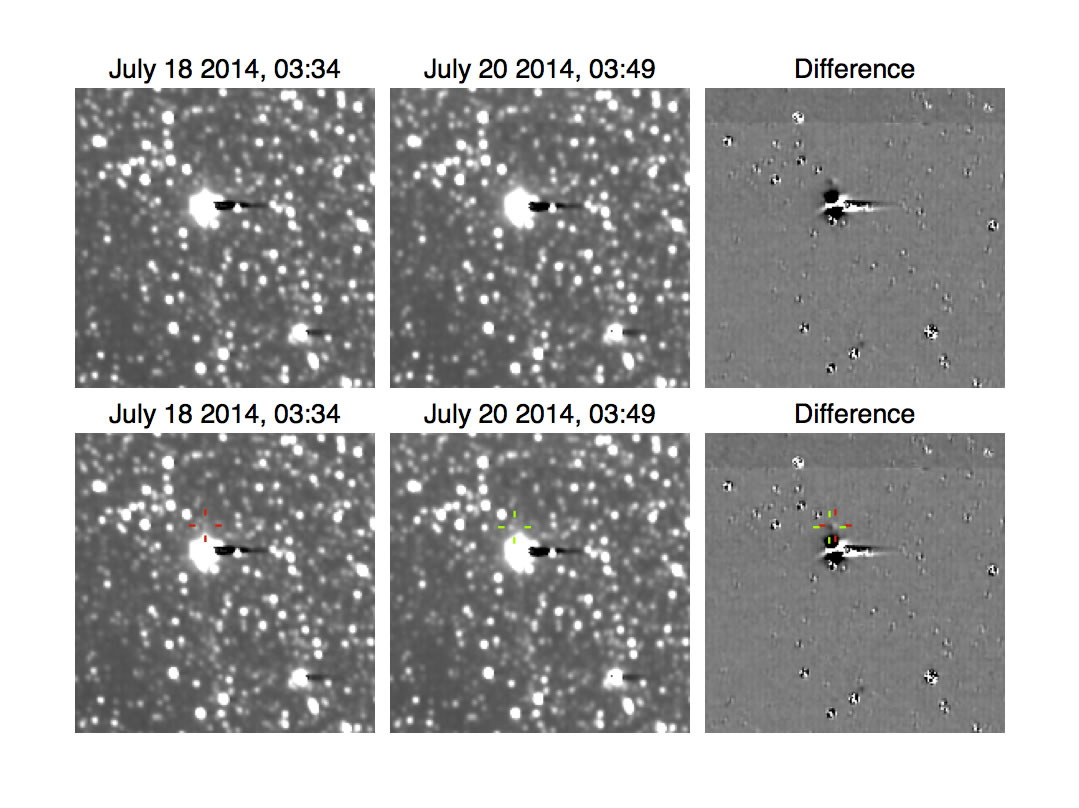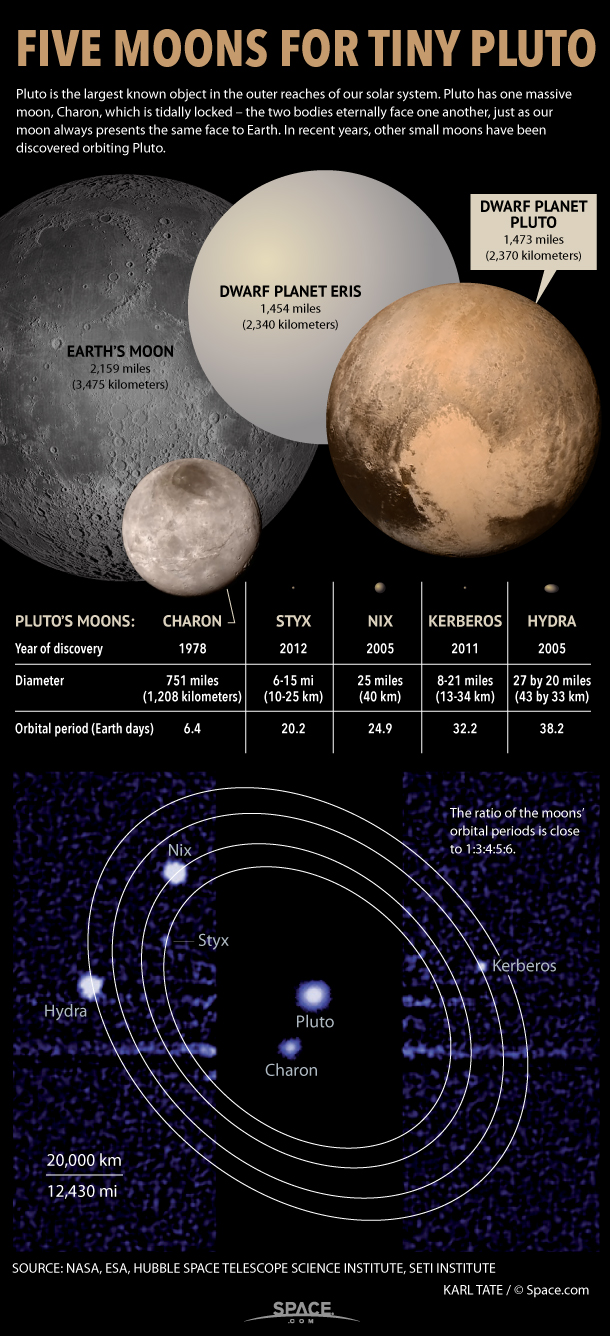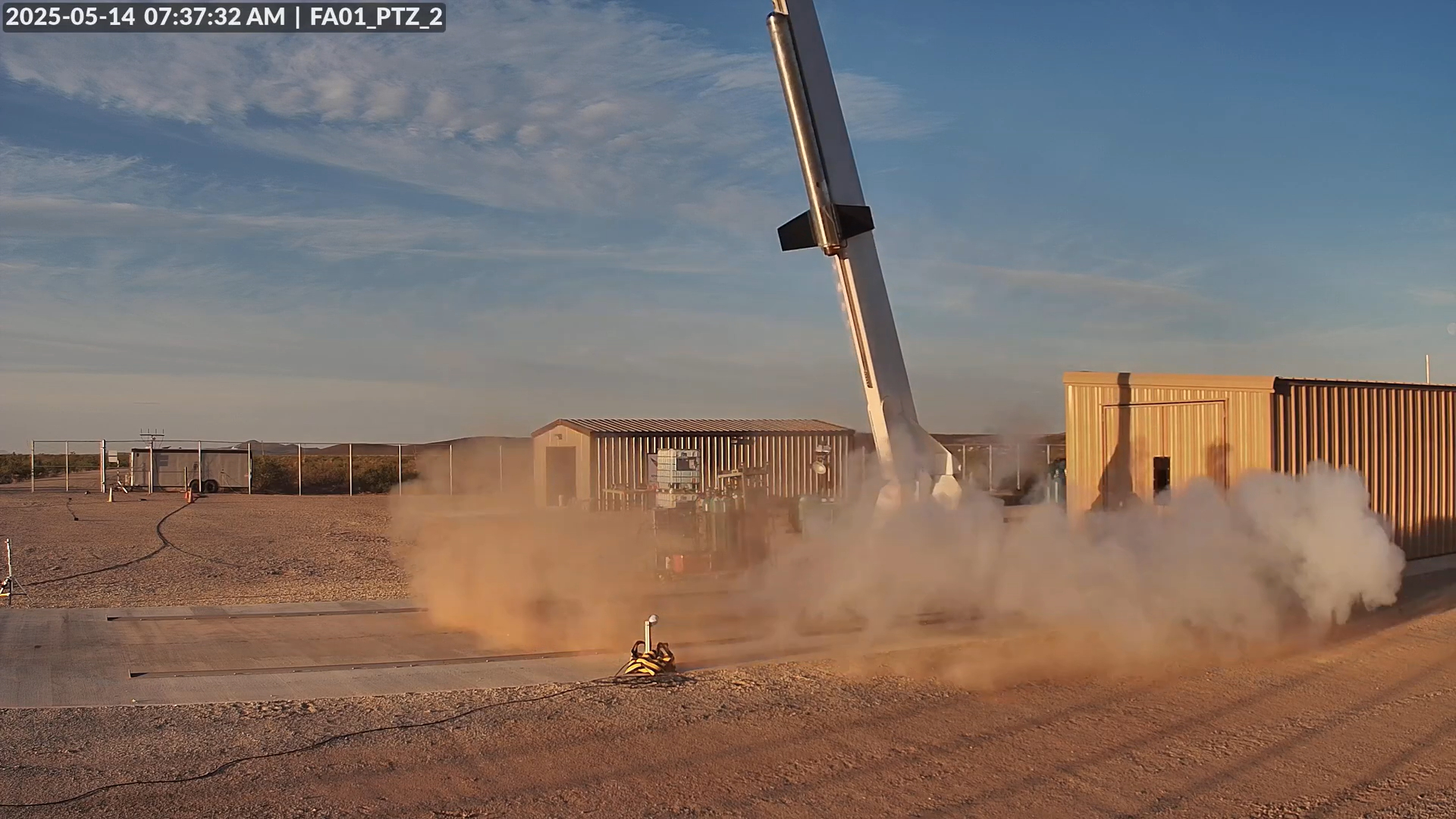New Horizons Spies Pluto's Tiny Moon Hydra

NASA's New Horizons spacecraft may still be 10 months from its historic flyby with dwarf planet Pluto, but it is making good use of its interplanetary cruise to get familiar with its flyby target by imaging Pluto's outermost moon Hydra.
ANALYSIS: Can We Call Pluto and Charon a 'Binary Planet' Yet?

During a practice run by mission scientists last July, the probe's Long Range Reconnaissance Imager (LORRI) was used to seek out Hydra in preparation for further survey work it needs to do as it approaches the dwarf planet. Through a series of long-exposure observations of the vicinity surrounding Pluto, the mission will use LORRI to detect any undetected moons and debris — obstacles that could spell trouble for the speeding spacecraft. [New Horizons Pluto Mission in Pictures]
New Horizons will carry out the series of long-exposure mosaics in May and June 2015 just before the Pluto rendezvous in the following July.
To spot Hydra, LORRI was used to capture 48 10-second exposures. Those images were then combined to produce a very high-contrast view of the Plutonian neighborhood. The survey created an over-exposed Pluto (the white blob in the center) and caused an overexposed artifact through some rows of camera CCD pixels, but it did the job; Hydra could be identified.
NEWS: Radio Telescope Pinpoints Pluto for Spacecraft Buddy
Interestingly, mission scientists didn't expect to see the moon, which is estimated to be between 19−52 miles wide, as New Horizons was a whopping 267 million miles from the target. So the fact LORRI and the imaging techniques employed were able to detect such a faint target has reassured the team that they should be able to spot any hazardous objects well ahead of time.
Get the Space.com Newsletter
Breaking space news, the latest updates on rocket launches, skywatching events and more!
"Using those techniques, Hydra popped right out of the data, though it's still very faint — several times fainter than the faintest objects the New Horizons camera was designed to detect — and still very close to Pluto," said John Spencer, of the Southwest Research Institute and member of the New Horizons Science Team. "We're thrilled to see it, because it shows that our satellite-search techniques work, and that our camera is operating superbly. But it’s also exciting just to see a third member of the Pluto system come into view, as proof that we’re almost there!"
ANALYSIS: Pluto and Moon Charon May Share Same Atmosphere
This detection comes hot on the heels of the imaging of Charon, Pluto’s largest moon, as both objects orbited one another early last month.
This article was provided by Discovery News.
Join our Space Forums to keep talking space on the latest missions, night sky and more! And if you have a news tip, correction or comment, let us know at: community@space.com.
Ian O'Neill is a media relations specialist at NASA's Jet Propulsion Laboratory (JPL) in Southern California. Prior to joining JPL, he served as editor for the Astronomical Society of the Pacific‘s Mercury magazine and Mercury Online and contributed articles to a number of other publications, including Space.com, Space.com, Live Science, HISTORY.com, Scientific American. Ian holds a Ph.D in solar physics and a master's degree in planetary and space physics.
